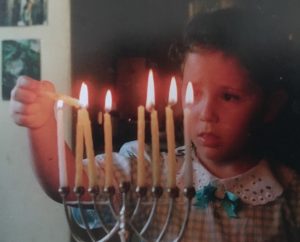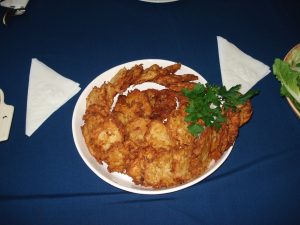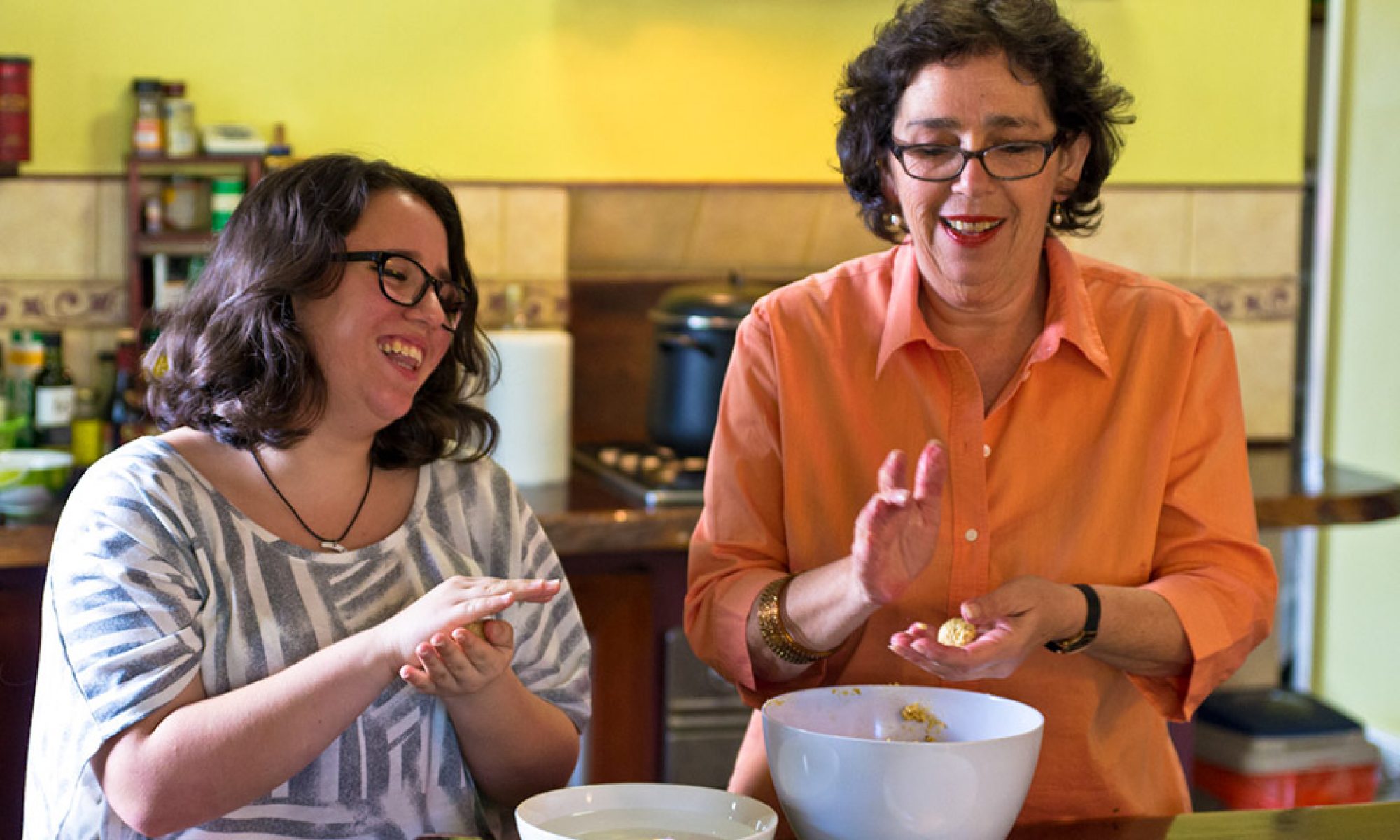Sunday is the first night of Chanukah, or Hannuka.
Chanukah occurs around the same time as Christmas, just as Pesach falls around Easter. It could be argued that Easter and Pesach have related origins. Not so with Chanukah.
Chanukah is not a High Holy Day, it is a minor holiday, but that does not make it insignificant. In my secular home it wasn’t celebrated, despite my best efforts. Chanukah observance has really taken off in the US.
There is no such thing as “Chrismukah”. There really isn’t a connection. But Chanukah has assumed increasing importance in the face of Christmas. And it is celebrated with games and small gifts (stocking fillers?), sweets and children often receive coins – real or chocolate. You can see why it’s popular with children, and they do love to play with fire.

It’s good to remember that money was given to children so they might use it for tzedekah (poorly translated as ‘charity’ but tied up with the idea of righteousness, which sounds an awful lot like social justice to me.
Chanukah commemorates the uprising of Judah the Maccabee, against the rule of the first Syrian-Greek conquerors (the Seleucids) who had occupied Jerusalem and despoiled the Great Temple. After driving them out the Temple needed reconsecration and for the oil lamps to be relit. But there was only one container of oil for this purpose. Supposedly it somehow burnt for 8 days, the time it took to produce more oil. Some details are confusing here but we are speaking of miracles!
Jews have been celebrating ever since by lighting one candle on the first night and adding another each night until the eight night when they are all lit.
While a Menorah looks like this:

The Chanukiah looks like:
 with nine candle holders. Eight candles are in a line and the ninth candle is either at a different height or in a different position on the Hanukiah. It is lit at sunset.
with nine candle holders. Eight candles are in a line and the ninth candle is either at a different height or in a different position on the Hanukiah. It is lit at sunset.
Since it is the miracle of the oil, it is customary to eat foods fried in oil. No wonder it’s so popular! The Eastern-European classic is the potato latke (pancake) garnished with applesauce or sour cream, while Israelis favour the jelly-filled sufganya (doughnut). We go for both because why wouldn’t you?
Latkes are a very typical Ashkenazi (Eastern European Jewish) food. Very much like a potato rosti they are potato cakes.

My Latke Recipe:
Grate about 1 med onion and 2 med potatoes. You will need to strain the potato in a tea towel to remove the starchy liquid – but you should always keep a little liquid in case your mixture gets too dry and claggy.
The potato and onion is added to 2 beaten eggs, salt and pepper. Mix it well and then add about 2 tablespoons of flower (self raising or not).Just enough to bring it all together. Gluten free works just as well.
Then you heat your oil – and don’t bother with olive oil – you need peanut or safflower oil. Drop a tablespoon in and flatten it with a spatula or the back of a spoon.
Turn, cook them till they’re brown and then drain on paper towels. Latkes are such a treat that in my family the word signifies anything rather good. They don’t look elegant, but then Ashkenazi food has little to do with elegance and everything to do with taste. Potato, onion and oil, what can go wrong?

